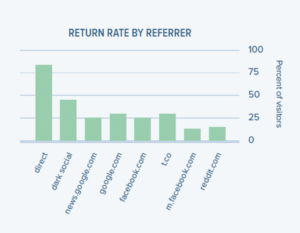Lately, Facebook has been very active in the online advertising and publishing space, but are Facebook’s developments going to be a boon or bust for online publishers? Let’s examine how publishers can use Facebook’s latest efforts to their advantage, and what they need to look out for.
Recent articles by the New York Times and Fusion revealed that Facebook is a large source of traffic for publishers. As the most popular social network, Facebook is a powerful way for publishers to reach larger audiences, especially as it follows through with its plans to feature more content from publishers within its mobile app. The main gist of the argument is that hosted content will load quicker, thus resulting in a better reader experience.
Given that Facebook generated over $3.85 billion in Q4 2014, an ad-revenue sharing arrangement with Facebook looks very enticing. Who wouldn’t want even a small slice of that pie? It that weren’t enough, Facebook generates over 66 percent of its ad revenue from mobile advertising; something that publishers have mainly failed to replicate despite consumers’ shift from mobile to desktop.
With all these good reasons, it would be tempting for publishers to focus their efforts on Facebook. If reports are to be believed, Facebook is already in negotiations with The New York Times, Buzzfeed, and National Geographic to host their content directly in its platform, rather than redirecting readers to the publishers’ websites.
However, while publishers should make plans to take advantage of Facebook referrals and the ability to publish more content directly on that platform; publishers shouldn’t neglect direct traffic for two very good reasons.
Firstly, direct traffic represents a publisher’s most loyal and engaged audience, as can be seen in the following chart, which is from recent research from Chartbeat that compares visitor return rates by traffic source. As you can see, direct visitors are the most loyal. After all, they took the trouble to either memorize your URL or bookmark your site. Neglecting this audience segment to focus on referrals, who may only have a temporary interest, could be detrimental.

[Chart 1 – Site Visitor Return Rate by Referrer. Source: Chartbeat, Oct 2013)
For example, advertisers are increasing their use of engagement metrics—such as viewability, hover-over, and recall—to buy online advertising. The Financial Times, which is currently selling some ad units by time-spent on page rather than by impressions, is one very prominent example of this. By overlooking your most loyal audience, you risk reducing your overall engagement levels, which could negatively impact your ad revenue as engagement data becomes mainstream.
Secondly, because direct traffic represents your core audience, it’s also one of the richest sources of audience data, which publishers can use to make informed decisions about editorial content, marketing strategy, and to improve monetization. To this last point, being able to target ads by different audience segments is key to gaining higher CPMs and yield and also a great way to optimize your content. Buzzfeed is an excellent example of using data to improve its business. If too much traffic comes from Facebook and it becomes the dominant referrer, publishers will lose this data and a valuable connection to their readers.
As an indication of how valuable this data can be, Facebook’s latest patent is largely based around combining its social data with data provided by third parties, such as what articles people have read on a publisher’s website, to optimize content on both Facebook and external sites. This not only has applications for better user experiences, but may significantly improve its ability to target Native advertising and video – two very power and lucrative forms of advertising. Currently this data must be fed to Facebook, but how much easier would it be to collect this data if the articles were hosted directly on Facebook?
So how do publishers get the best of both worlds? While publishers should take advantage of Facebook’s mobile app for incremental traffic and revenue, they should also ramp up their multi-channel contact strategy, such as newsletters, top stories widgets or new content push notifications. This will help them to retain a direct link to their core audience, as well as encourage first-time referral visitors to come directly back to the site. Research from the IAB, which states consumers value apps for web discovery and that many links in apps lead to mobile web visits, points to this being a viable strategy until apps change the way they ingest 3rd party content.
In addition, to provide more value to their advertisers and protect their revenue, some publishers may decide to form co-operatives. By banding together, publishers can extend the reach and audience insight that they can offer advertisers, which would work well if the publishers share a mutual audience set or premium brands. A recent example of this is the Pangea Alliance, which was formed between the Guardian, CNN International, The Financial Times, Reuters, and the Economist—premium publishers whose audience is very much in the professional and financial space.
Interestingly, while early thoughts were that larger publishers would be immune to Facebook’s allure, recent developments and our research shows that smaller publishers may have more time to prepare for this issue than the Comscore 1000. According to data from sovrn’s network, Facebook currently drives a smaller percentage of total traffic to smaller publishers versus larger publishers. Until Facebook turns its focus, it seems readers tend to find the small- and mid-sized professional publishers on their own and access content directly from those sites. My advice to smaller publishers: use this time wisely to figure out what your Facebook strategy is going to be, particularly if you’re looking to grow your readership but want to protect your brand loyalty.

